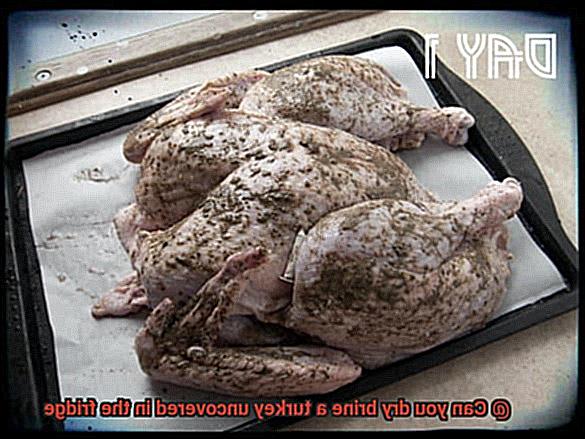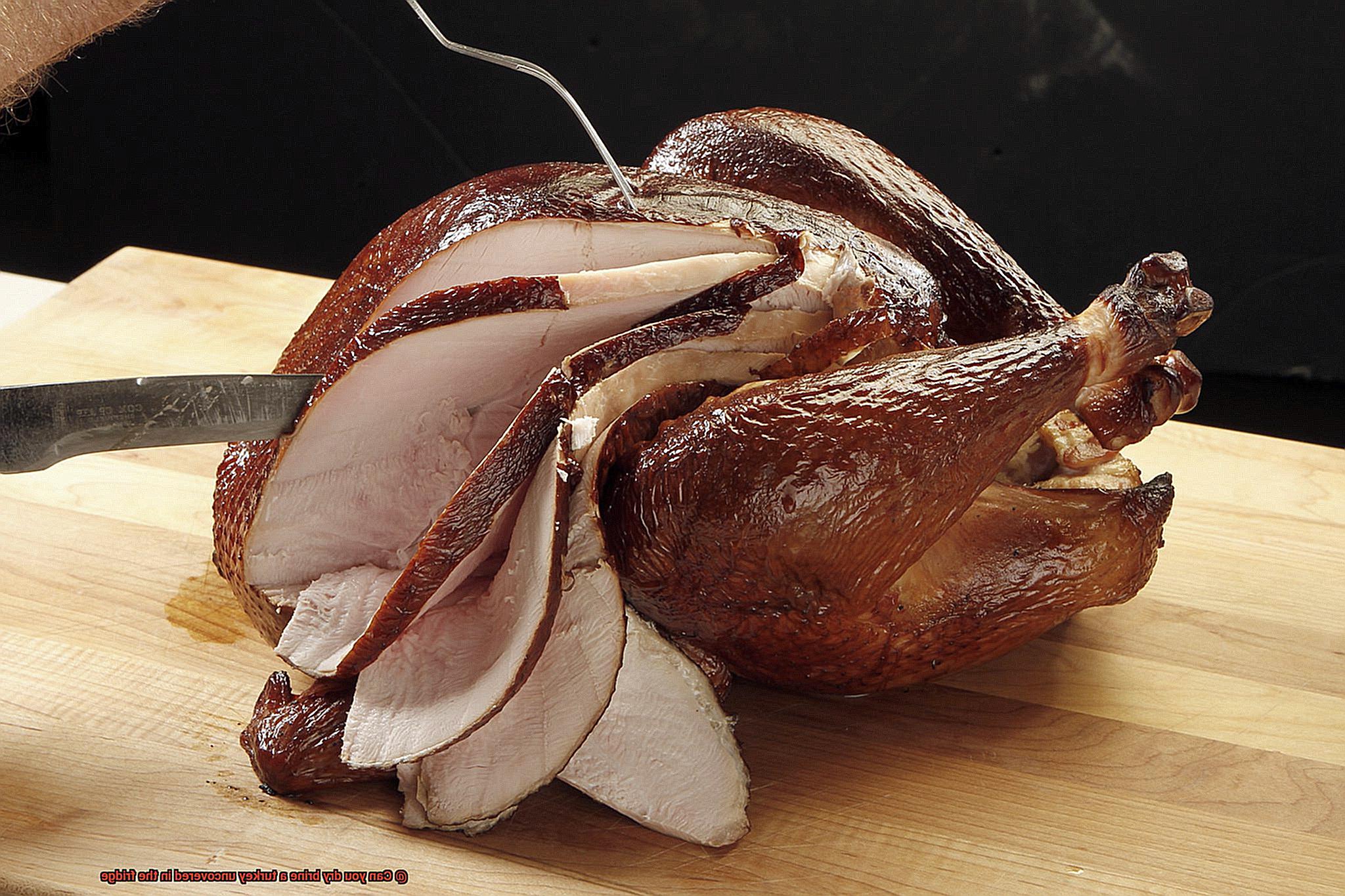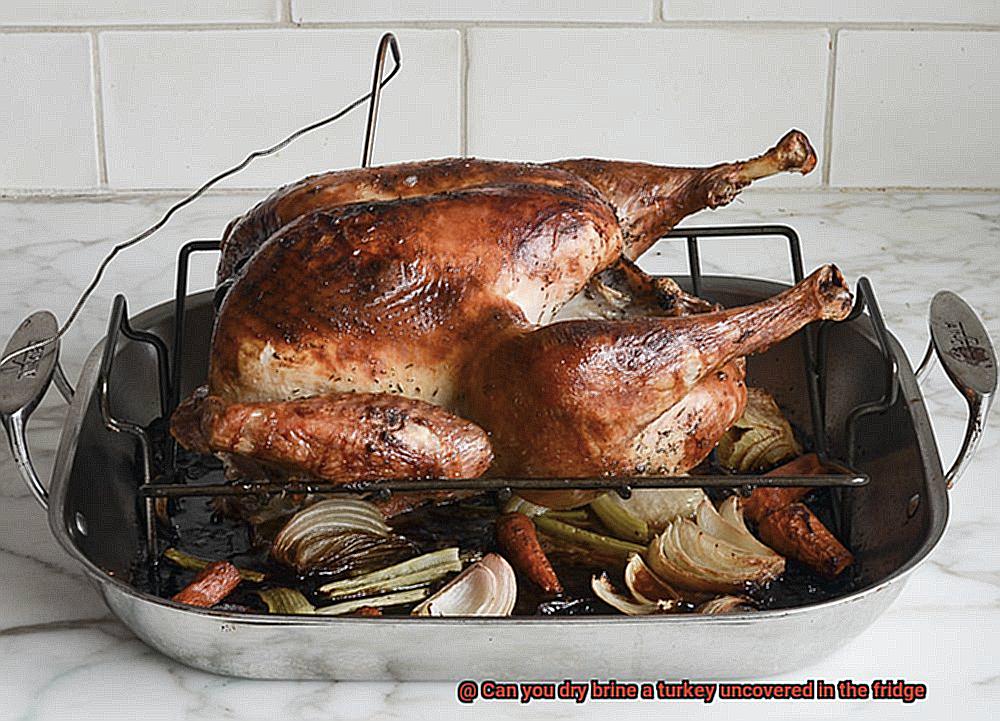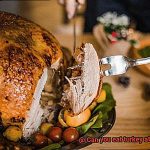The holiday season is here, and what better way to celebrate than with a delicious turkey feast? But before you start cooking, there’s one question that’s been on everyone’s mind: Can you dry brine a turkey uncovered in the fridge? Dry brining has become increasingly popular in recent years because it allows the turkey to soak up all the flavors of the seasoning without any of the mess of a wet brine. However, whether or not to cover your turkey during the dry brining process is still up for debate.
Like any cooking method, accuracy and consistency are key to success. The main goal of dry brining is to make your turkey more flavorful and juicy by allowing it to absorb all those delicious seasonings. But it’s crucial to do it right. You can dry brine your turkey with or without covering it, but each method comes with its own set of pros and cons.
In this blog post, we’ll be exploring everything you need to know about dry brining and answering that burning question: Can you dry brine a turkey uncovered in the fridge? We’ll discuss all the benefits and drawbacks of this method and provide you with some helpful tips that will ensure your holiday bird takes center stage at your next gathering. So buckle up, get ready for some mouth-watering goodness, and let’s dive right in.
Contents
What is Dry Brining?
Look no further than the technique of dry brining. This easy and effective method involves rubbing salt and other seasonings onto the meat and letting it sit in the refrigerator for a certain amount of time.
Dry brining is particularly great for those who want to avoid a messy wet brine, which involves submerging the meat in a saltwater solution. With dry brining, there’s no need for any additional liquid. Plus, it allows the poultry skin to dry out, resulting in a deliciously crispy texture when cooked.
To dry brine a turkey or other poultry, start by ensuring that it is fully thawed. Then, apply the dry brine mixture directly to the skin and under the skin if possible. Use about 1 tablespoon of salt per 5 pounds of meat, and feel free to add other seasonings like herbs or spices as well.
After applying the dry brine mixture, cover the turkey loosely with plastic wrap or foil and place it on a rack in the refrigerator for at least 12 hours (or up to 48 hours for larger birds). During this time, the salt will penetrate the meat and help to tenderize it while also adding flavor.
When you’re ready to cook your poultry, remove it from the fridge and let it sit at room temperature for about an hour before roasting. This will help ensure even cooking throughout the meat.
Benefits of Dry Brining a Turkey
Dry brining is quickly becoming the go-to method for home cooks looking to add flavor and moisture to their holiday bird. As an expert on the topic, let me tell you about the benefits of dry brining a turkey.
First and foremost, dry brining results in a juicy and flavorful bird. The salt in the brine not only seasons the meat but also helps to break down its proteins, creating a more tender texture. The sugar in the mixture helps to balance out the saltiness and adds a subtle sweetness to the meat. Plus, since the turkey is not sitting in liquid, it will have a crispy skin when roasted – who doesn’t love that?
Dry brining is also more convenient than wet brining. You won’t need any additional equipment, such as buckets or large bags, and it takes up minimal space in your refrigerator. And as an added bonus, it’s easy to customize your dry brine to suit your individual tastes. Whether you prefer bold herbs like rosemary or thyme, smoky flavors from smoked paprika, or savory garlic powder – the possibilities are endless.
Another benefit of dry brining is that it can be done ahead of time, freeing up your oven and stove on the day of your big meal. By prepping your bird with a dry brine mixture 24-48 hours beforehand, you’ll have one less thing to worry about on Thanksgiving Day.
But wait, there’s more. Dry brining also reduces cooking time compared to traditional wet brining methods. Because the turkey is already infused with flavor and moisture from the dry brine, it cooks faster and more evenly. This means less time spent in the kitchen and more time enjoying your holiday with loved ones.

Preparing the Turkey for Dry Brining
Elevate your Thanksgiving turkey game by dry brining it. But before diving into the specifics of this process, let’s first master the art of preparing a turkey for dry brining.
Begin by ensuring that your turkey is completely thawed. This may take several days in the refrigerator, so plan accordingly. Once thawed, remove it from the packaging and pat it dry with paper towels. The key here is to make sure that the skin is as dry as possible so that the dry brine can adhere properly.
Next, gently loosen the skin from the meat by sliding your fingers between them. It’s important to do this carefully, so as not to tear the skin and impact the final result of that crispy finish we all crave.
Now, it’s time to apply the dry brine. For every 5 pounds of turkey, use about 1 tablespoon of kosher salt. However, don’t be afraid to get creative and add your desired herbs or spices to the mix. Rosemary, thyme, garlic powder, paprika, black pepper – there are endless possibilities. Mix them together in a separate bowl and generously rub them over both under and on top of the skin.
Once your turkey is fully coated in the dry brine mixture, wrap it tightly in plastic wrap and place it on a baking sheet or large platter. The next step is crucial: wait patiently. Place it in the refrigerator for at least 24-48 hours to allow the salt and spices to penetrate the meat and flavor it from within.

Applying the Dry Brine Mixture
Dry brining a turkey is a surefire way to elevate your Thanksgiving meal to the next level. As an expert in the art of dry brining, I am excited to share with you the essential steps for applying the dry brine mixture to your turkey.
Firstly, it is crucial to pat your turkey dry with paper towels before applying the dry brine mixture. This ensures that the mixture adheres well to the surface of your bird. Once you have done this, generously sprinkle the dry brine mixture over every inch of the turkey, taking care to get into all nooks and crannies.
To ensure even distribution of the mixture, use your hands to rub it in and add any additional seasonings like herbs or spices at this point. This will enhance the flavor of your turkey significantly. After applying the dry brine mixture, place your turkey on a wire rack set over a baking sheet and refrigerate it uncovered for at least 12 hours, and up to 48 hours.
During this time, the salt in the brine mixture will penetrate deep into the meat, resulting in a tender and juicy bird. Additionally, any excess moisture on the surface of your turkey will evaporate, allowing for crispy skin when cooked. If you want a guaranteed crispy skin on your turkey, try air-drying it in the refrigerator for a few hours before cooking.
It is worth noting that while refrigerating your turkey uncovered, make sure that it is not touching any other food items in your fridge. This helps prevent cross-contamination and ensures that your turkey stays safe to eat.
Refrigeration Time for Dry Brining a Turkey

As Thanksgiving approaches, it’s time to start thinking about the star of the show: the turkey. If you’re looking for a way to take your turkey game to the next level, dry brining is the way to go. However, how long should you refrigerate your dry-brined turkey? As an expert in this field, I’m here to provide you with some helpful tips and tricks.
Dry brining is the process of rubbing salt and other seasonings onto the turkey and letting it sit in the refrigerator for a certain amount of time. This allows the salt to draw out moisture from the bird, which is then reabsorbed along with the seasonings, resulting in a more flavorful and juicy turkey. The key ingredient here is salt, which acts as a flavor enhancer and also helps to break down the proteins in the meat, resulting in a tender bird.
Now, onto the important question – how long should you refrigerate your dry-brined turkey? The answer is simple. Plan on at least 24 hours of refrigeration time for every 5 pounds of turkey. So, if you have a 15-pound turkey, you should let it dry brine in the refrigerator for at least 72 hours. This will ensure that the salt has enough time to penetrate the meat and work its magic.
However, timing isn’t everything; technique is also crucial. During this refrigeration time, make sure to leave the turkey uncovered in the fridge. This allows air to circulate around the bird and helps to dry out the skin, resulting in a crispier texture when roasted. Flipping the turkey over halfway through the refrigeration time can also ensure even seasoning and moisture absorption.
If you have limited space in your fridge, don’t worry – there’s a solution for that too. Place the turkey on a wire rack set inside a rimmed baking sheet to allow for better air circulation.
Removing the Turkey from Refrigeration and Preheating Oven
You’ve done the hard work of dry-brining your turkey, and now it’s time to take it out of the fridge and get it ready for the oven. But how do you ensure that your bird cooks evenly and doesn’t dry out? Don’t worry, I’m here to guide you through the process with some simple yet effective steps.
Firstly, make sure to take the turkey out of the fridge at least an hour before roasting. Allowing your bird to come to room temperature is critical for even cooking and preventing it from drying out. While waiting for it to warm up, preheat your oven to 325°F (160°C) for a juicy and perfectly cooked turkey.
Next, grab some paper towels and pat the turkey dry. This step is essential in removing any excess moisture that could prevent the skin from achieving a satisfying crispiness. It’s also an excellent opportunity to inspect the bird for any stray feathers or unwanted bits.
Once your turkey is dry, it’s ready to be roasted. Place it on a roasting rack in a shallow roasting pan and follow your recipe’s instructions carefully. Remember to baste every 30 minutes or so to keep it moist and flavorful.
Here are some additional tips to ensure a perfect turkey:
- Trussing your bird will help it cook evenly, so don’t skip this step.
- Covering your turkey with foil during the first half of cooking will prevent the skin from getting too dark too soon.
- Letting your roasted turkey rest for 20-30 minutes before carving will allow the juices to redistribute throughout the meat, resulting in a more tender and flavorful bird.
Rinsing off the Dry Brine Mixture Before Roasting
Turkey preparation can be a daunting task, but dry brining is an excellent way to infuse flavor and moisture into your bird without the hassle of a traditional wet brine. However, the question remains: should you rinse off the dry brine mixture before roasting? As an expert in the field, let me guide you through this debate.
If you choose to rinse off the brine, it’s essential to do so several hours before cooking to allow the turkey enough time to dry out. This will ensure that the skin becomes crispy when roasted. To rinse off the brine, simply place the turkey under cold running water and gently rub the surface to remove any excess salt. Make sure to pat the turkey completely dry with paper towels afterward to remove any excess moisture.
On the other hand, some argue that rinsing off the dry brine mixture will wash away all the flavors and seasoning. This is a valid point as some of the spices and herbs in your brine mixture may not penetrate as deeply into the meat as you’d like. Additionally, rinsing off the dry brine adds extra steps to your cooking process which could be inconvenient for some.
If you decide not to rinse off your dry brine mixture, be aware that your turkey may end up being saltier than desired. To prevent this, it’s recommended to use less salt in your dry brine mixture or shorten the amount of time you brine your turkey.
Ultimately, whether or not you rinse off your dry brine mixture is entirely up to personal preference. Experiment with both methods and see which one works best for you and your taste buds. If you’re worried about your turkey being too salty or want a more neutral flavor profile, go ahead and rinse off the dry brine mixture several hours before roasting. Alternatively, if you’re confident in your brine mixture and want to maximize flavor, skip the rinse step and let those spices and herbs shine.
Conclusion
Dry brining has revolutionized the way we prepare our Thanksgiving turkey. The method involves rubbing salt and other seasonings onto the meat and letting it rest in the refrigerator for at least 12 hours. But can you dry brine a turkey uncovered in the fridge? Yes, you can. However, there are pros and cons to both covered and uncovered methods.
The beauty of dry brining is that it results in a succulent bird with crispy skin when roasted. Plus, it’s more convenient than wet brining, easy to customize, and reduces cooking time. But to achieve optimal results, accuracy and consistency are crucial.
To dry brine your turkey uncovered, ensure that it is fully thawed, pat it dry with paper towels, loosen the skin from the meat, apply the dry brine mixture directly to the skin (and under if possible), place it on a rack in your fridge (uncovered), and let it rest for at least 12 hours (up to 48 hours for larger birds).
When removing your turkey from refrigeration before roasting, let it come to room temperature for even cooking. You may rinse off the dry brine mixture several hours before roasting if desired but be warned that this may wash away some of the flavors and seasoning. Ultimately, whether or not to rinse off your dry brine mixture is up to personal preference.
In conclusion, whether you choose to dry brine your turkey covered or uncovered in the fridge depends on your personal preference.






